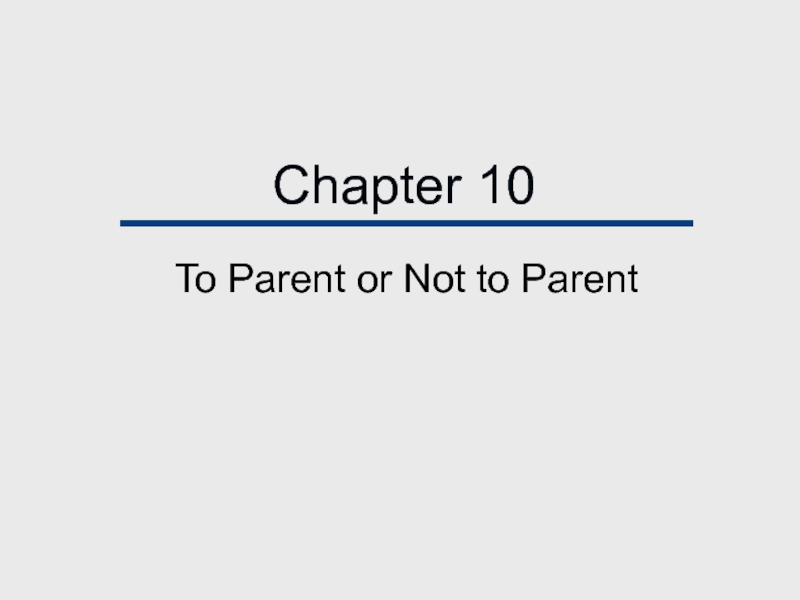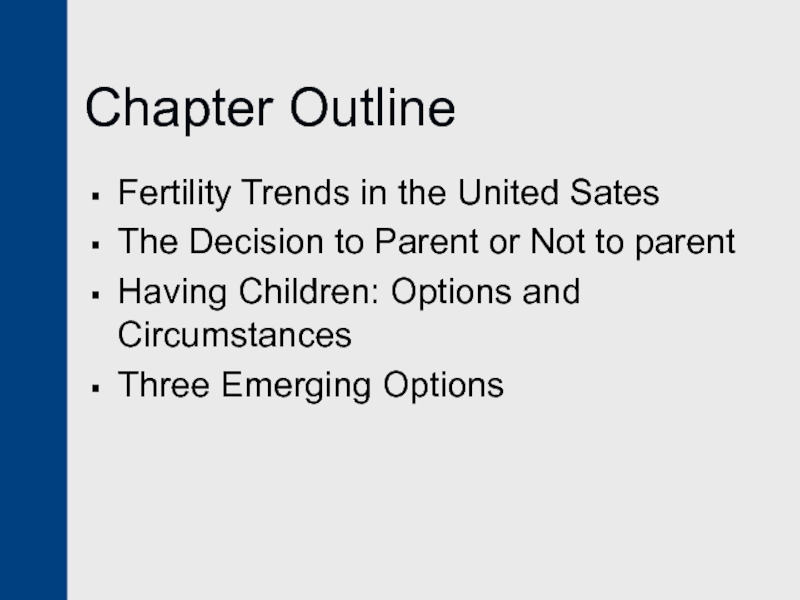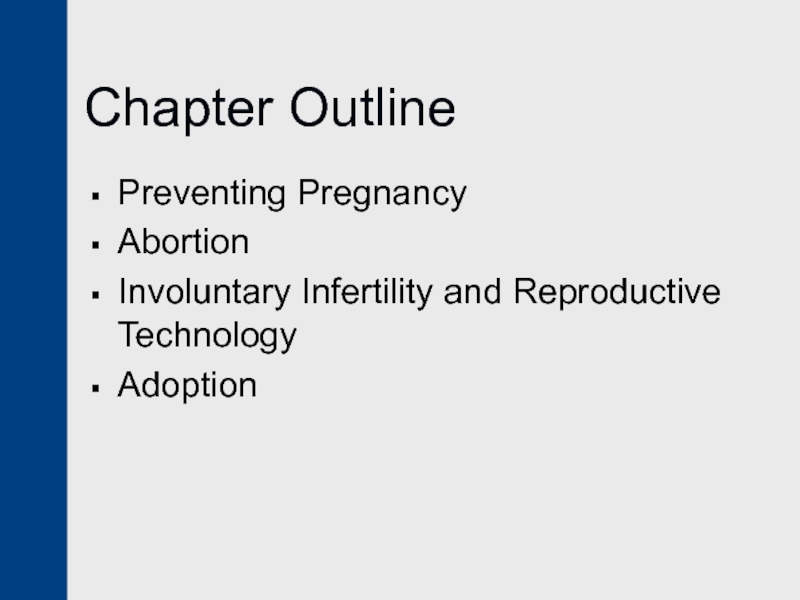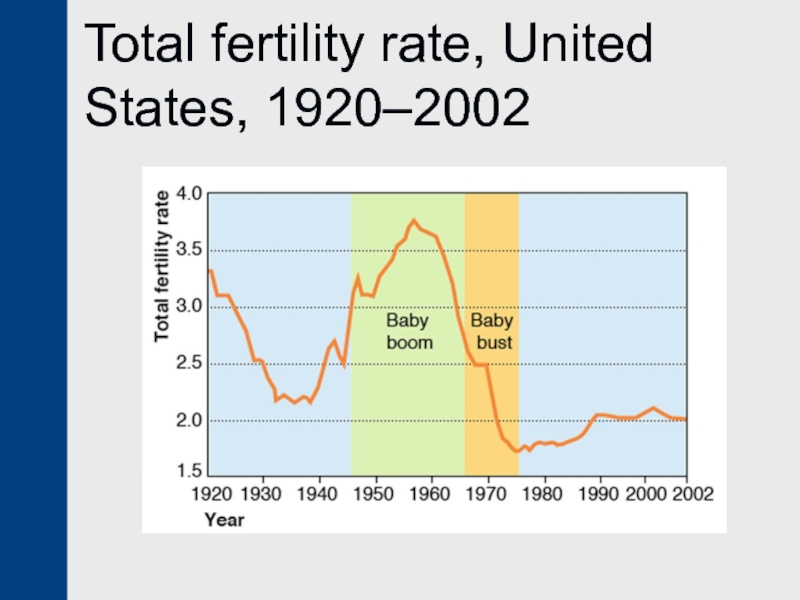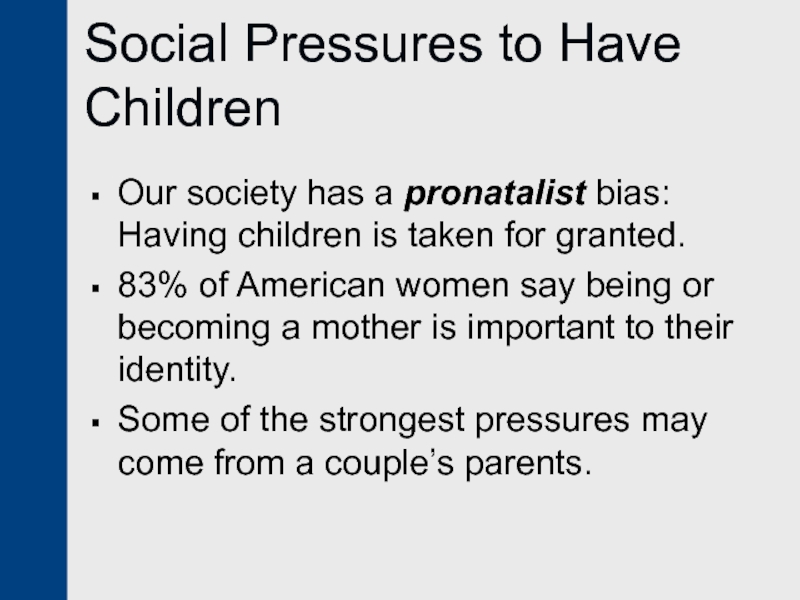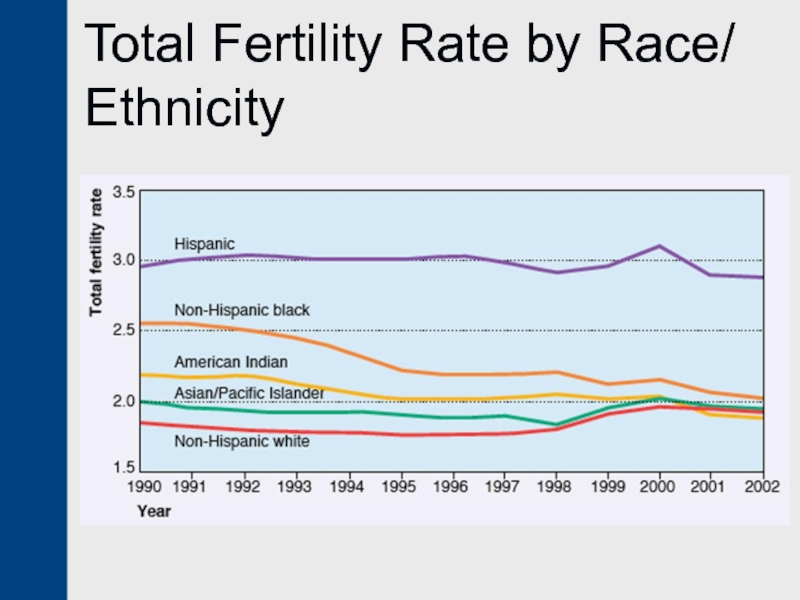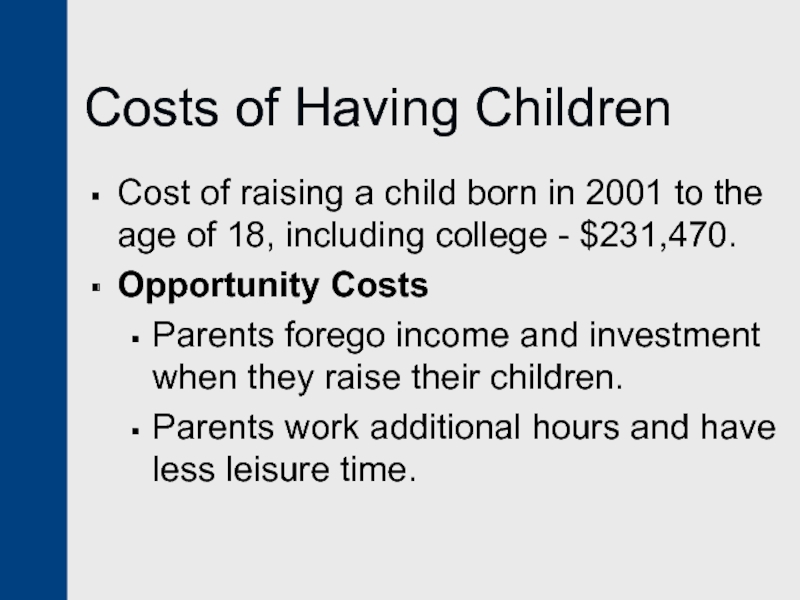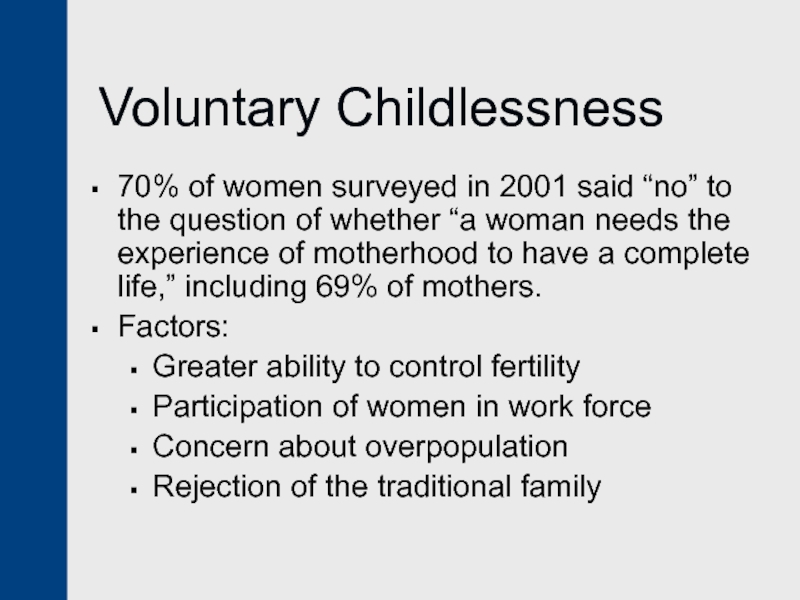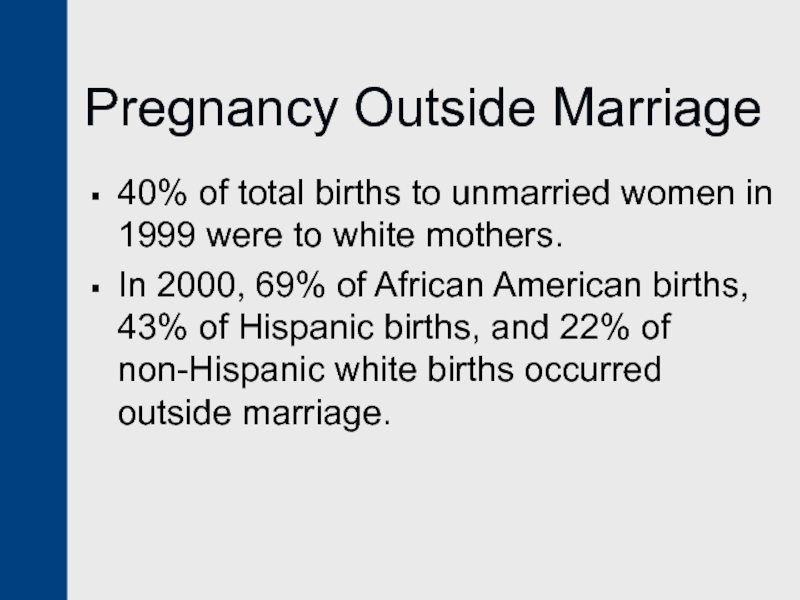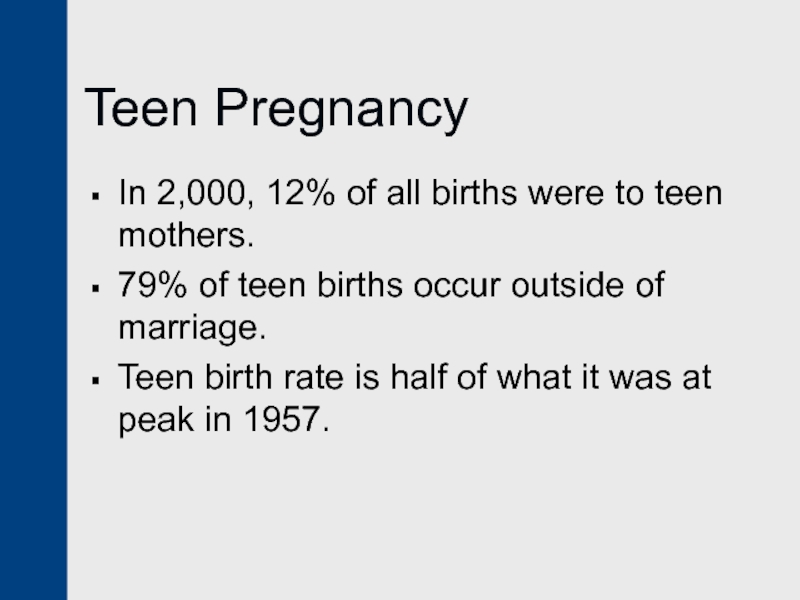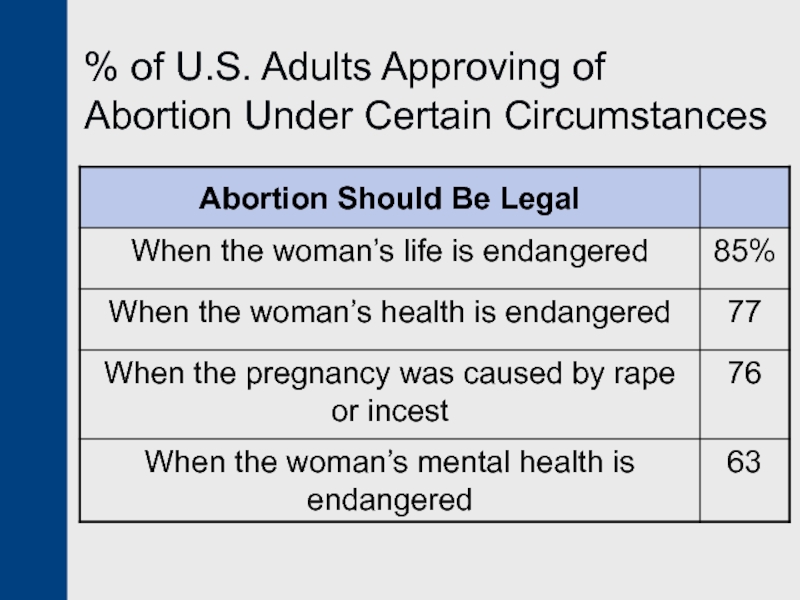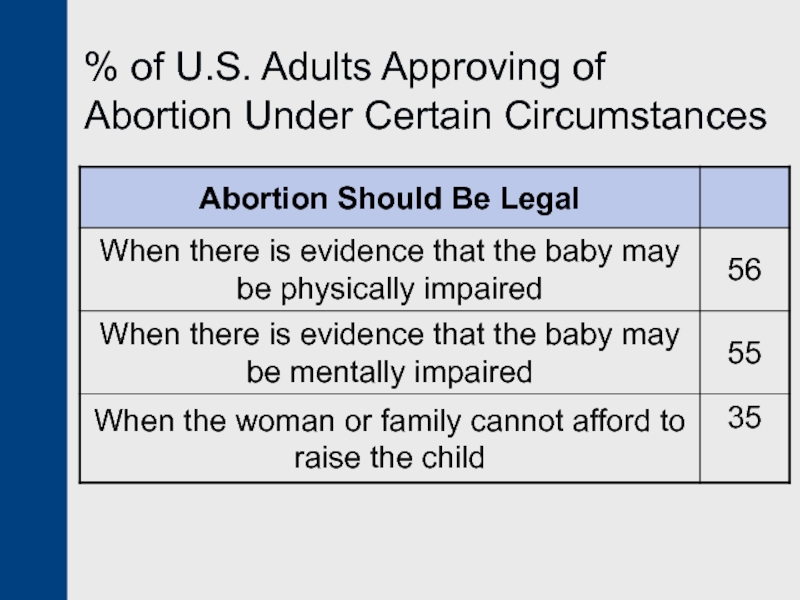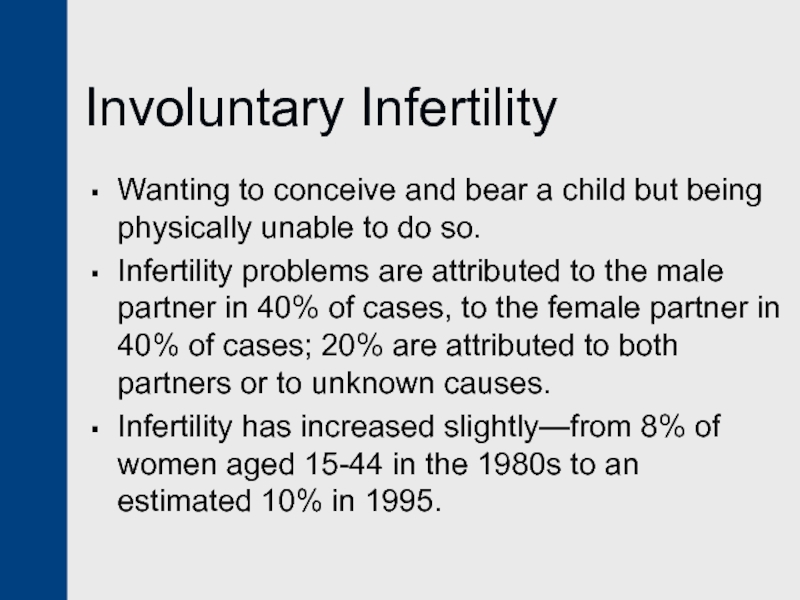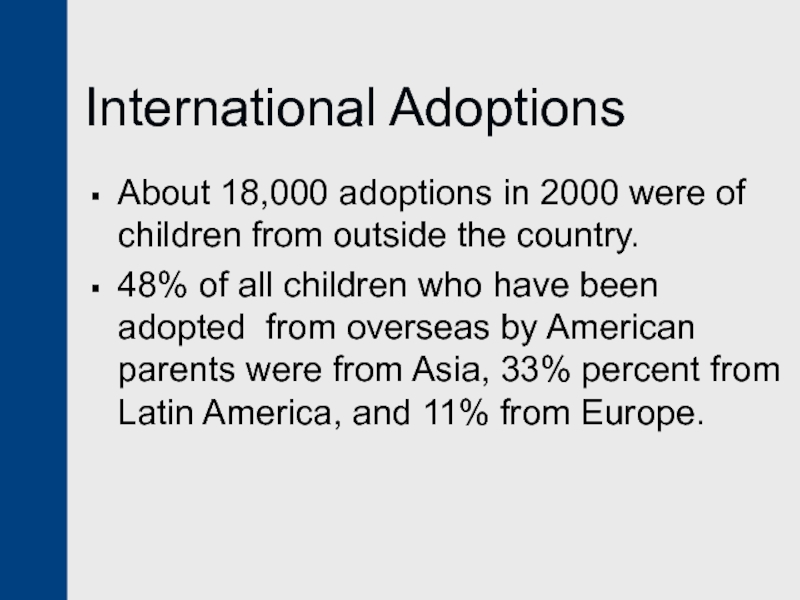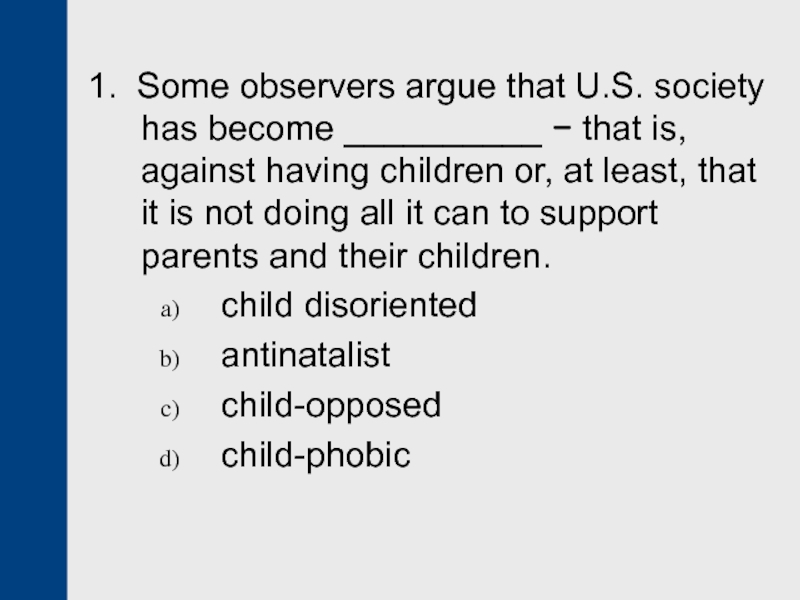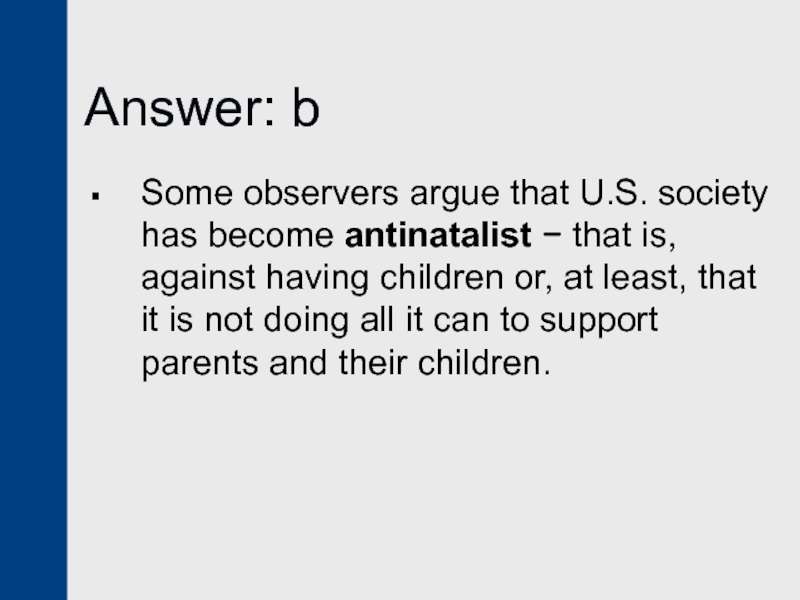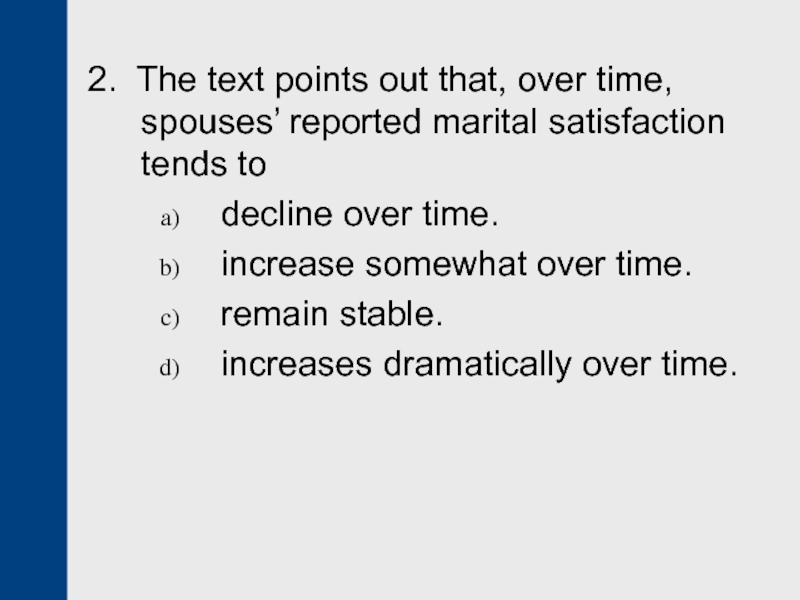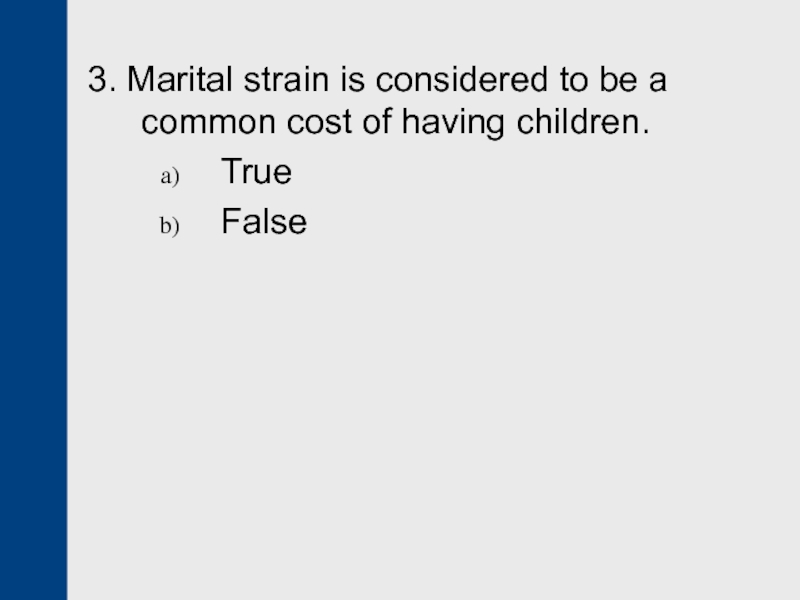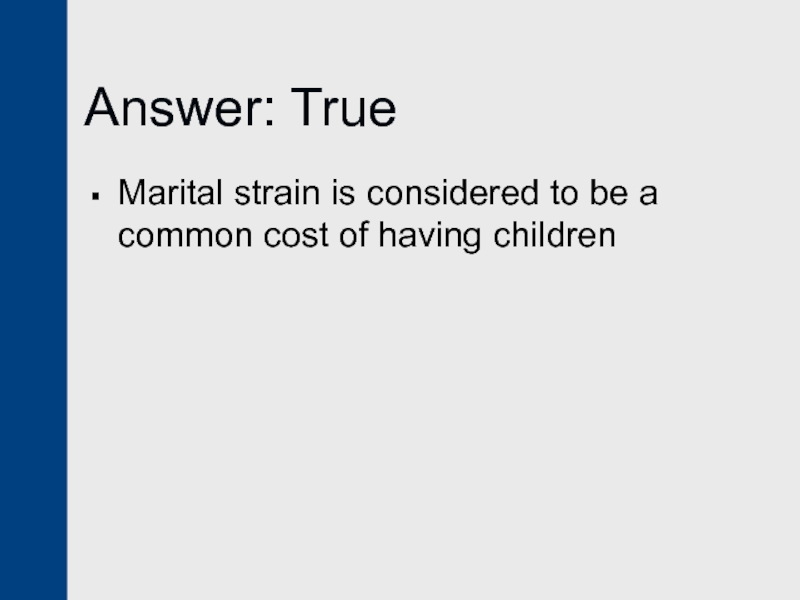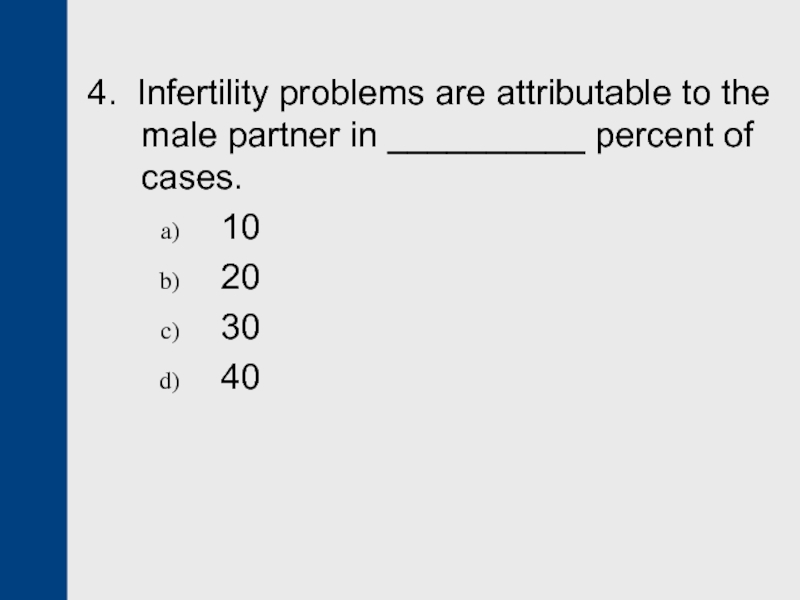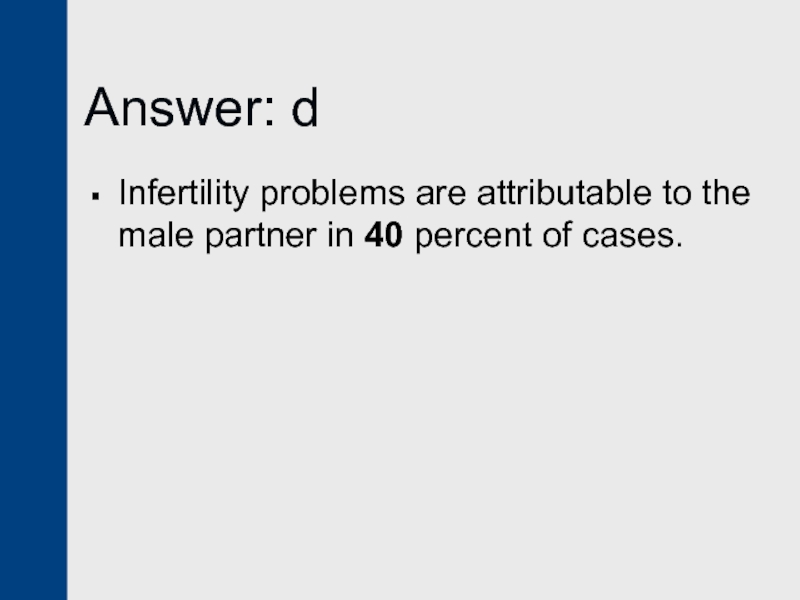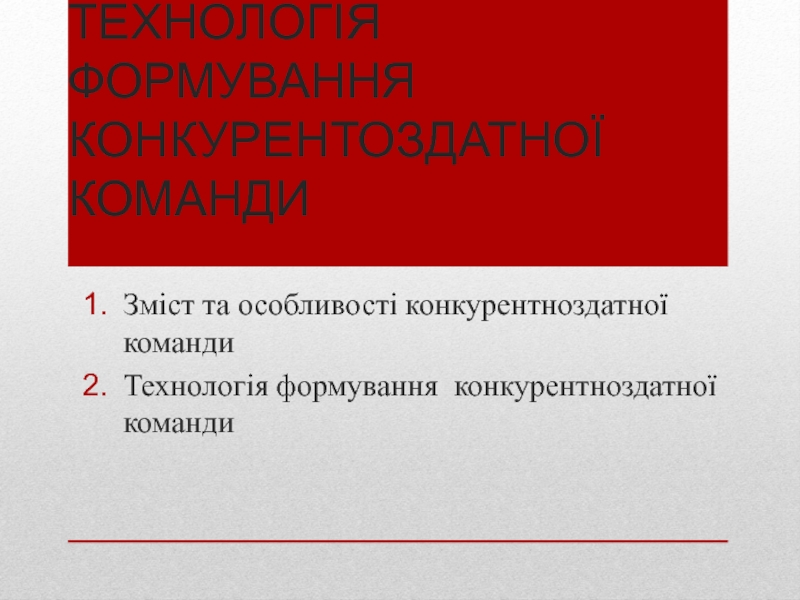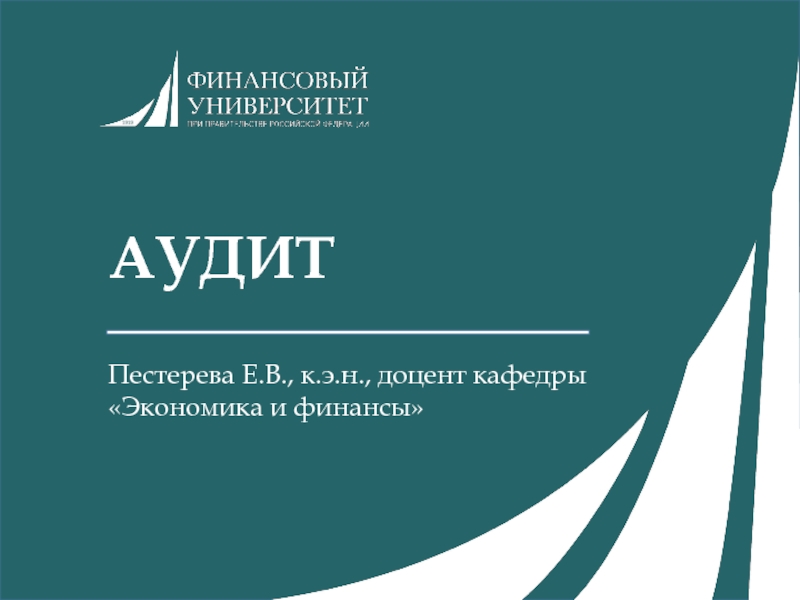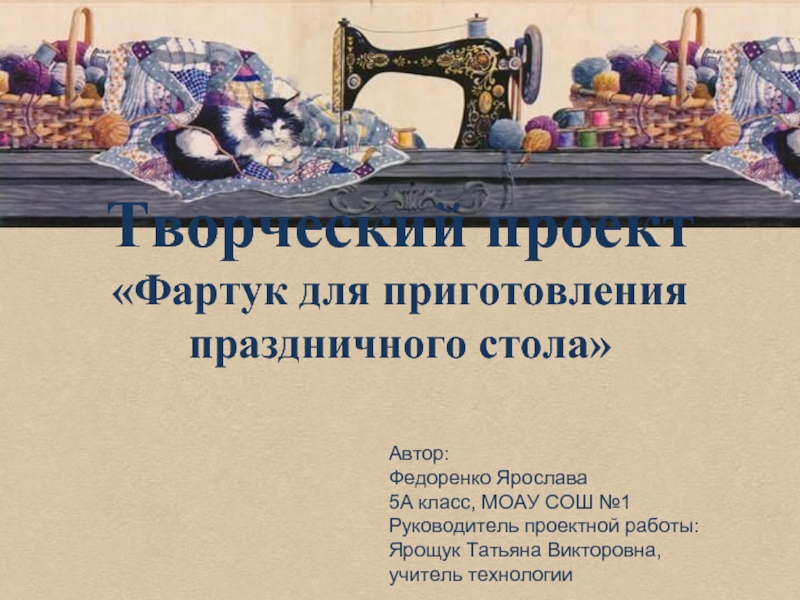Разделы презентаций
- Разное
- Английский язык
- Астрономия
- Алгебра
- Биология
- География
- Геометрия
- Детские презентации
- Информатика
- История
- Литература
- Математика
- Медицина
- Менеджмент
- Музыка
- МХК
- Немецкий язык
- ОБЖ
- Обществознание
- Окружающий мир
- Педагогика
- Русский язык
- Технология
- Физика
- Философия
- Химия
- Шаблоны, картинки для презентаций
- Экология
- Экономика
- Юриспруденция
Chapter 10
Содержание
- 1. Chapter 10
- 2. Chapter OutlineFertility Trends in the United SatesThe
- 3. Chapter OutlinePreventing PregnancyAbortionInvoluntary Infertility and Reproductive TechnologyAdoption
- 4. Total fertility rate, United States, 1920–2002
- 5. Social Pressures to Have ChildrenOur society has
- 6. Total Fertility Rate by Race/ Ethnicity
- 7. Costs of Having ChildrenCost of raising a
- 8. Voluntary Childlessness70% of women surveyed in
- 9. Births To Unmarried Women As % of All Births
- 10. Pregnancy Outside Marriage40% of total births to
- 11. Слайд 11
- 12. Teen PregnancyIn 2,000, 12% of all births
- 13. Abortion30% of American women have had an
- 14. % of U.S. Adults Approving of Abortion Under Certain Circumstances
- 15. % of U.S. Adults Approving of Abortion Under Certain Circumstances
- 16. Involuntary InfertilityWanting to conceive and bear a
- 17. AdoptionThe U.S. Census looked at adoption for
- 18. International AdoptionsAbout 18,000 adoptions in 2000 were
- 19. Quick Quiz
- 20. 1. Some observers argue that U.S. society
- 21. Answer: bSome observers argue that U.S. society
- 22. 2. The text points out that, over
- 23. Answer: aThe text points out that spouses’ reported marital satisfaction tends to decline over time.
- 24. 3. Marital strain is considered to be a common cost of having children.TrueFalse
- 25. Answer: TrueMarital strain is considered to be a common cost of having children
- 26. 4. Infertility problems are attributable to the male partner in __________ percent of cases.1020 3040
- 27. Answer: dInfertility problems are attributable to the male partner in 40 percent of cases.
- 28. Скачать презентанцию
Chapter OutlineFertility Trends in the United SatesThe Decision to Parent or Not to parentHaving Children: Options and CircumstancesThree Emerging Options
Слайды и текст этой презентации
Слайд 3Chapter Outline
Preventing Pregnancy
Abortion
Involuntary Infertility and Reproductive Technology
Adoption
Слайд 5Social Pressures to Have Children
Our society has a pronatalist bias:
Having children is taken for granted.
83% of American women say
being or becoming a mother is important to their identity.Some of the strongest pressures may come from a couple’s parents.
Слайд 7Costs of Having Children
Cost of raising a child born in
2001 to the age of 18, including college - $231,470.
Opportunity
Costs Parents forego income and investment when they raise their children.
Parents work additional hours and have less leisure time.
Слайд 8 Voluntary Childlessness
70% of women surveyed in 2001 said “no”
to the question of whether “a woman needs the experience
of motherhood to have a complete life,” including 69% of mothers.Factors:
Greater ability to control fertility
Participation of women in work force
Concern about overpopulation
Rejection of the traditional family
Слайд 10Pregnancy Outside Marriage
40% of total births to unmarried women in
1999 were to white mothers.
In 2000, 69% of African American
births, 43% of Hispanic births, and 22% of non-Hispanic white births occurred outside marriage.Слайд 12Teen Pregnancy
In 2,000, 12% of all births were to teen
mothers.
79% of teen births occur outside of marriage.
Teen birth rate
is half of what it was at peak in 1957.Слайд 13Abortion
30% of American women have had an induced abortion at
some point in their lives.
Abortion decisions are primarily made in
the context of unmarried, accidental pregnancy. Слайд 16Involuntary Infertility
Wanting to conceive and bear a child but being
physically unable to do so.
Infertility problems are attributed to
the male partner in 40% of cases, to the female partner in 40% of cases; 20% are attributed to both partners or to unknown causes.Infertility has increased slightly—from 8% of women aged 15-44 in the 1980s to an estimated 10% in 1995.
Слайд 17Adoption
The U.S. Census looked at adoption for the first time
in 2000 when there were more than 2 million adopted
children in U.S. households, about 2.5% of all children.In terms of numbers there are more adopted children in non-Hispanic white families.
Asian/Pacific Islander families have the highest rate of adoption relative to their population.
Слайд 18International Adoptions
About 18,000 adoptions in 2000 were of children from
outside the country.
48% of all children who have been
adopted from overseas by American parents were from Asia, 33% percent from Latin America, and 11% from Europe.Слайд 201. Some observers argue that U.S. society has become __________
that is, against having children or, at least, that
it is not doing all it can to support parents and their children.child disoriented
antinatalist
child-opposed
child-phobic
Слайд 21Answer: b
Some observers argue that U.S. society has become antinatalist
that is, against having children or, at least, that
it is not doing all it can to support parents and their children.Слайд 222. The text points out that, over time, spouses’
reported marital satisfaction tends to
decline over time.
increase somewhat over time.
remain
stable.increases dramatically over time.
